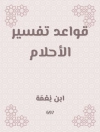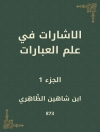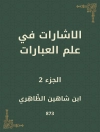This practical book provides the tools needed to design, execute, and evaluate fully integrated mixed methods research studies. A uniting metaphor of the architectural arch helps students understand the benefits of a mixed methods approach as they consider ways to integrate the qualitative and quantitative strands at all stages of design and execution. With use of examples from popular media and published research, this text also includes a detailed discussion of ways to accomplish mixing methods during data collection and analysis and a separate chapter on designing and executing a realistic mixed methods dissertation.
Jadual kandungan
List of Tables and Figures
Preface
Conceptual Framework
Purpose
Audience
Distinguishing Features
Organization of the Book
Organization of Each Chapter
Taking Advantage of the Text
Related Assignments
Acknowledgments
About the Author
PART 1: FOUNDATIONAL ISSUES
Chapter 1: Definitional Issues
Example from Popular Media: Locating the Bones of Richard III
Purposes and Goals of the Chapter
Different Perspectives on the Definition of Mixed Methods Research
The Centrality of Mixing to the Definition of Mixed Methods Research
Distinguishing Qualitative and Quantitative Approaches
Qualitative and Quantitative Approaches as Different Analytical Strategies
Conceptualizing Qualitative and Quantitative Approaches on a Continuum
Mixed Methods as a Logic of Inquiry
Evaluation and Mixed Methods
Conceptual Framework – Fully Integrated Mixed Methods Research
The Architectural Arch as a Metaphor
‘Mixed Up’ Methods
Controversies Involving Foundational Issues
Summary of Key Points
Key Terms
Supplemental Activity
Recommended Reading
Chapter 2: Classifying the Purposes of Mixed Methods Research
Mixed Methods Research Featured in the Popular Media
Purpose, Goals, and Contribution of the Chapter
Arguments for the Preeminence of Purpose in Distinguishing Mixed Methods Studies
An Over-Riding Purpose of Mixing Compatible Methods: Triangulation
Typologies for Categorizing Research Articles by Purpose
Evolution of Typologies
An Expanded Typology of Purposes
Design Features of the Major Categories of Purpose Types
Prevalence of the Use of Different Types of Purposes
Design Features of the Exemplary Publication (Durksen & Klassen, 2012)
Mixing in the Chapter Exemplar
Value-Added of Mixed Methods in the Chapter Exemplar
Situations Where a Mixed Methods Approach May Not Be Appropriate
Conclusions
Recommendations for Practice
Summary of Key Points
Key Terms
Supplemental Activities
Recommended Reading
Chapter 3: Recognizing Paradigmatic Assumptions
Purpose, Goals, and Contribution of the Chapter
Goals of the Chapter
Defining What is Meant by a Paradigm
Differing Viewpoints About the Relevance of Paradigms
Key Features of Paradigmatic Stances to Research That Are Compatible with Mixed Methods
Pragmatism
Dialectical Pluralism
Realist and Critical Realist Paradigm
Transformative-Emancipatory Paradigm
Grounded Theory and Mixed Methods – Exemplary Publication (Gasson & Waters, 2013)
Paradigmatic Assumptions that are Likely to Be Incompatible with Mixed Methods
Being Reflexive About Your Own Paradigm
Controversies Associated with Paradigms
Conclusion
Summary of Key Points
Key Terms
Supplemental Activities
Recommended Reading
Chapter 4: Distinguishing Mixed Methods Designs
Purposes, Goals, and Contribution of the Chapter
Timing and Priority as Key Features That Distinguish Mixed Method Designs
A Classification System for Prototypical Mixed Method Designs
Summary About Design Types
Priority as a Key Feature of Mixed Method Designs
A Notation System that Incorporates Priority and Timing
Explaining the Prevalence of a Quantitative Priority
Mixed Methods Studies with Unequal Priority
Mixed Methods Studies with a Qualitative Priority
Design Features of the Exemplary Publication
Describing Key Features of the Chapter Exemplar
Strategies to Establish Priority
Equal Priority Mixed Methods Studies
Conclusions
Summary of Key Points
Key Terms
Supplemental Activities
Recommended Reading
PART 2: EXECUTING FULLY INTEGRATED MIXED METHODS RESEARCH
Chapter 5: Strategies for Mixing Prior to Analysis
Example from the Popular Media: The Blue Zones
Purposes, Goals, and Contribution of the Chapter
Organization of the Chapter
Design Phase Mixing: Mixed Method Purpose Statements and Research Questions
Wording Research Questions to Reflect Priority
Three Approaches to Writing Mixed Method Research Questions
Mixing During Sampling
Combining Probability and Purposeful Sampling
Timing as a Way to Distinguish Mixed Method Sampling Approaches
Using Identical or Nested Samples
Exemplary Article: A Mixed Method Study of Using Social Media (Young & Jaganath, 2013)
Five Types of Mixing in the Chapter Exemplar
Methodological Transparency in the Exemplar
Conclusion
Summary of Key Points
Key Terms
Supplemental Activities
Recommended Reading
Chapter 6: Mixed Method Analytical Procedures
Returning to the Metaphor of the Architectural Arch
Purpose, Goals, and Contribution of the Chapter
Mixed Method Analytical Strategies
Examples of the Use of Mixed Method Analytical Strategies
Example 1: Illustrating Data Transformation: Creamer and Ghoston (2012)
Example 2: Illustration Four Mixed Methods Analytical Strategies: Jang, Mc Dougall, Pollon, Herbert, and Russell (2008)
Example 3: Illustrating Two Mixed Method Analytical Strategies: Elliott, Gale, Parsons, Kuh, and The HALCyon Study (2014)
Mixing by Constructing Inferences and Meta-Inferences
Examples of Meta-Inferences
Embedding Design Strategies that Promote Meaningful Meta-Inferences
Conclusions
Summary of Key Points
Key Terms
Supplemental Activities
Recommended Reading
Chapter 7: Data Transformation and other Strategies for Mixing During Analysis
Purpose, Goals, and Contribution of the Chapter
Contributions of the Chapter
Organization of the Chapter
Quantifying and Quantitizing Qualitative Data
Quantifying
Attending to Sample Size
Examples of Quantifying and Quantitizing Qualitative Data
Example One from Mazzola, Walker, Schockley, & Spector (2011): Quantifying two Qualitatively Derived Variables for Purposes of Demonstrating a Relationship
Example Two from Castro, Kellison, Boyd, & Kopak (2010): Demonstrating a Relationship between Qualitatively and Quantitatively Derived Variables
Example Three from Young and Jaganath (2013): Quantifying Qualitative Themes to Show Change over Time
Example Four from Odom et al. (2006): Quantifying Qualitative Themes to Distinguish Groups
Qualitizing Numeric Data
Mixed Method Approaches to Case Study
Philosophical Assumptions of Case Study that are Well-Suited to Mixed Methods
Mixing by Linking Qualitative and Quantitative Data in a Case Report
Accomplishing Mixing through Sampling Procedures in Case Study Research
Exemplary Article: Mixed Methods Case Study Research by Cooper (2014)
Mixing across Stages of the Research Process in the Exemplar
Conclusions
Summary of Key Points
Key Terms
Supplemental Activities
Recommended Reading
PART 3: EVALUATING QUALITY
Chapter 8: Evaluating Quality in Mixed Methods Research Publications
Purpose, Goals, and Contribution of the Chapter
Organization of the Chapter
Chapter Exemplar: Mc Mahon (2007) Study About the Endorsement of Rape Myths among College Athletes
Mixed Method Evaluation Rubric (MMER)
Defining and Illustrating the Evaluation Criteria in the MMER
Criterion # 1: Transparency Application to the Exemplar
Criterion # 2: Amount of Mixing Application to the Exemplar
Criterion # 3: Interpretive Comprehensiveness Application to the Exemplar
Criterion # 4: Methodological Foundation Application to the Exemplar
Using Evaluation Criteria to Demonstrate a Link between Design and Quality
Challenges and Future Uses of the MMER
Summary of Key Points
Key Terms
Supplemental Activities
Recommended Reading
Chapter 9: Designing and Reporting a Fully Integrated Mixed Methods Research Proposal or Doctoral Dissertation
Communicating Priority
Purpose, Goals, and Contribution of the Chapter
Organization of the Chapter
Situations When the Multi-Method Label is Appropriate
Intentionality About Incorporating Design Features That Promote Mixing
Designing a Mixed Methods Study in Ways that are Feasible for a Newcomer to Empirical Research
Chapter Exemplars that are the Most Feasible as Models for Doctoral Research
Methods that are Adaptable to a Mixed Methods Approach
Content Analysis
Organizing a Mixed Methods Research Manuscript
Extending the Quality of Reporting
Process-Oriented Graphics
Illustrating the Guidelines for Methodological Transparency with an Exemplar
Conclusions
Summary of Key Points
Key Terms
Recommended Reading
PART 4: CONTROVERSIES AND FUTURE DIRECTIONS
Chapter 10: Controversies and Future Directions
Purposes, Goals, and Contribution of the Chapter
Contribution of the Chapter
Organization of the Chapter
Looking Back: Controversies about Mixed Methods Research
Evidence About Prevalence
Reframing Designs to Emphasize Mixing During Analysis
Conceiving Mixed Priority Designs
Inserting a Third Column: Visualizing Designs in Ways that Highlight Mixing
Re-Conceptualizing Priority in Terms of Inferences and Meta-Inferences
Applying a Template to Visualize Meta-Inferences
Summarizing Major Themes
Lessons from the Exemplars
Refocusing the Logic of Combination
Applying the Mixed Methods Label
Summary of Key Points
Key Terms
Supplemental Activities
Recommended Reading
Appendices
Appendix A: Summary of Key Points by Chapter
Appendix B: List of Supplemental Activities by Chapter
Appendix C: Blank Template for Article Summaries
Appendix D: Templates for Chapter Exemplars
Endnote
Glossary
References
Name Index
Subject Index
Mengenai Pengarang
Dr. Elizabeth Creamer is Professor Emerita from Virginia Polytechnic Institute and State University and Mixed Methods Program Senior Visiting Scholar. Dr. Creamer’s innovative work has advanced methodology combining grounded theory and mixed methods. She is the author of the 2018 SAGE textbook An Introduction to Fully Integrated Mixed Methods Research, which builds a framework for the integration of qualitative and quantitative data and analytical procedures across all phases of the research process. She also is the Past President of the Mixed Methods International Research Association (MMIRA), Co-Editor in Chief of Methods in Psychology and has authored the recently published book Advancing Grounded Theory with Mixed Methods (2021).












